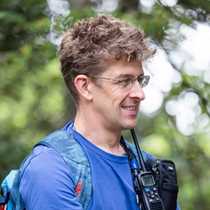Rays of morning sun peeked through the leaden sky as National Geographic Resolution arrived off the island of Miyajima, and small showers provided a welcome relief from the intense heat of the last few days. After an early breakfast, Zodiacs were launched, and guests sped to the island’s small settlement, which is centred around the historic Itsukushima Shrine. A walk along the shore led to spectacular views of the iconic ‘floating’ toiri gate just offshore. The shrine itself, seemingly suspended above the waves, is one of Japan’s most famous and important Shinto shrines, and parties of young school children visiting at the same time demonstrated the shrine’s importance to Japanese culture.
A short walk away, the Daisho-in Buddhist Temple showcases Japan’s other main religion. After a lengthy climb, we were rewarded with views of hundreds of iconic Buddha statues and a fascinating descent into the dark spaces beneath the temple itself. A walk down pitch-black corridors is broken only by the ghostly glow of intricate, golden artwork. Some guests went even higher, taking the island’s ropeway almost to the summit of Shishiiwa, the tallest mountain on the island.
In the afternoon, National Geographic Resolution made the brief passage to Hiroshima. A bustling and lively city, Hiroshima is best known for its tragic Second World War history. A walk around the Peace Memorial Park and views of the famous Atomic Dome – the only preserved building close to ground zero – prepared guests for the Peace Museum and the story of the atomic bomb’s effect on the city and its inhabitants. Some guests took in views of the park and the Atomic Dome from the Orizuru Tower, a new observation tower opened in 2016 that enables guests to survey the city from 50 metres up. Meanwhile, other guests headed for Shukkei-en Garden, a famous ‘shrunken scenery’ garden. Almost completely destroyed by the bomb, the garden reopened in 1951. Today, it is one of Japan’s most famous gardens, representing valleys and forests in perfect miniature.
Only a short distance away was the fascinating Cheomseongdae Observatory. Built in the 7th century, it is the oldest astronomical observatory in Asia.
Once we returned to the ship, it was back to Japanese history with historian Maria Intxaustegi's talk on the Nanbanjin (or Southern barbarians) and the story of early encounters between Japan and the western world.







